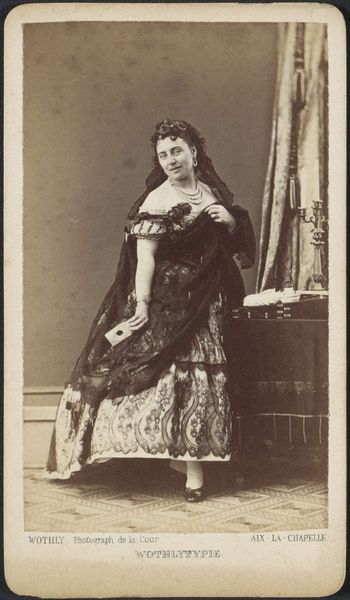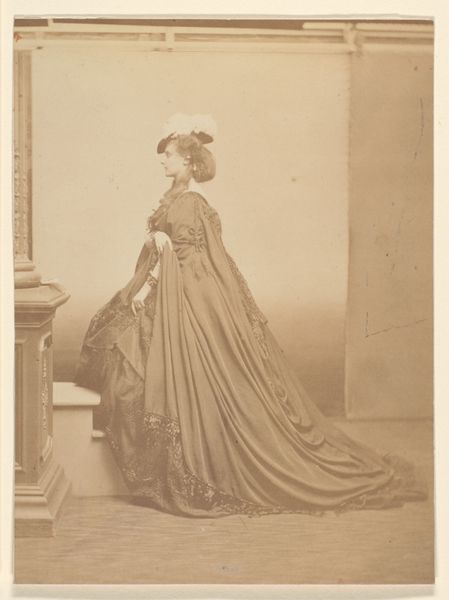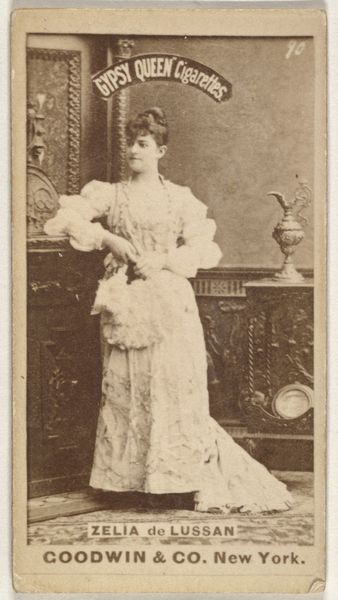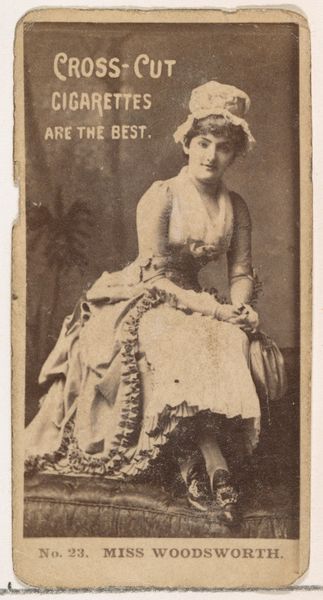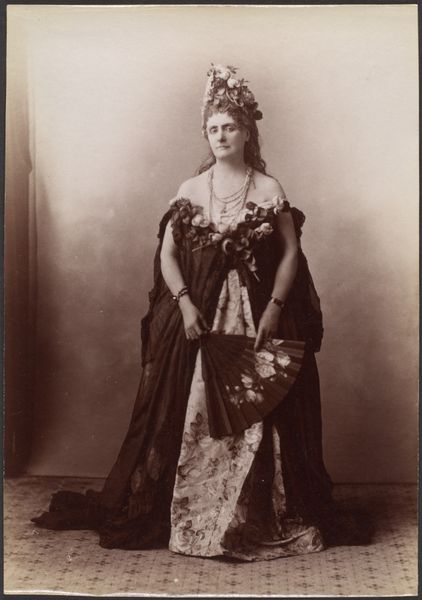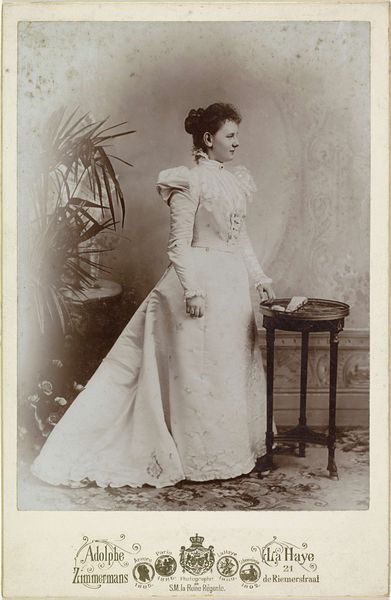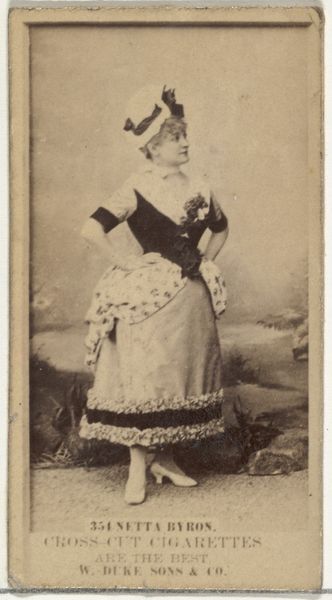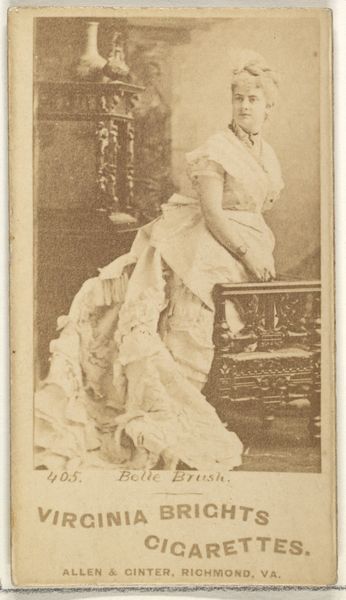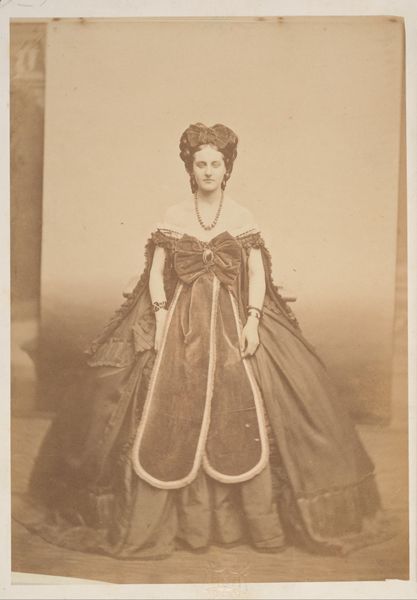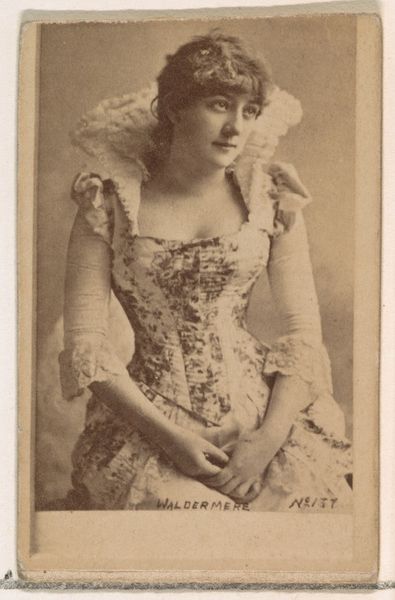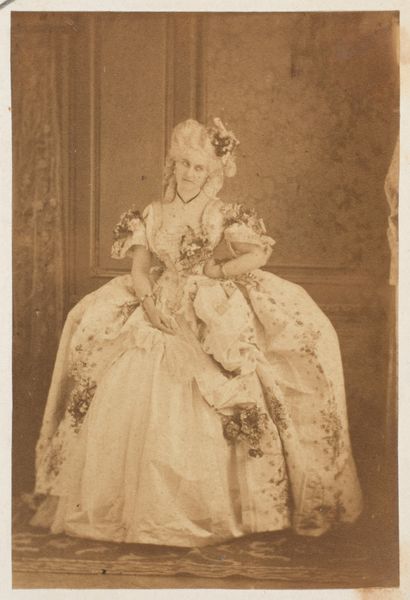
photography, gelatin-silver-print
#
portrait
#
photography
#
gelatin-silver-print
Dimensions: image/sheet: 8.5 × 5.6 cm (3 3/8 × 2 3/16 in.) mount: 9.5 × 6.4 cm (3 3/4 × 2 1/2 in.)
Copyright: National Gallery of Art: CC0 1.0
Curator: Looking at this photographic portrait of a woman, made in the 1860s by Camille Silvy using the gelatin-silver print process, I’m struck by how powerfully it resonates with our sense of Victorian ideals of femininity. Editor: Yes, instantly I get this sense of contained opulence—the sitter is clearly of means, yet there's also an unmistakable air of constraint about her posture and the setting itself. It feels staged, almost performative, which raises some questions about women's agency in that era. Curator: Indeed. The stage-like setting invites us to interpret her attire—the elaborate layered gown, the delicate lace, the floral wreath—as symbols of status and accomplishment. Flowers in particular signify virtue, but wreaths specifically denote achievement. She has power. But is this how she sees herself? Editor: Or how society wants to see her? Think about the implications of gelatin-silver print at this time, the way photography becomes more accessible to the rising middle class. Her controlled image might have been aimed to showcase aspirations. To some extent, it could speak to economic agency but perhaps more accurately speaks to performing identity for an emergent consumer culture. Curator: Exactly. Consider the backgrounds used in portraits from this period. It reveals a lot about aspiration. This constructed setting of architectural details along with the hazy outdoor space also indicates something about interior and exterior life of women. Editor: Right. Even though Silvy was an émigré, he’s astute to capture the zeitgeist, making accessible these kinds of tropes and poses that the upper middle classes expect. It underscores that gendered performance could be purchased and made visible to others, both at this time and later. Curator: And these visual codes would certainly have been readable to the Victorian audience. A single, powerful image. I agree it reveals societal and class issues deeply rooted at that time. Editor: For me, it's the calculated staging of this work, how effectively it masks societal complexities while simultaneously highlighting them, which makes it an intriguing lens for exploring class and gender. Curator: A good lens through which to explore the female image throughout time as well. I will reflect on her "virtue" and societal standing.
Comments
No comments
Be the first to comment and join the conversation on the ultimate creative platform.
